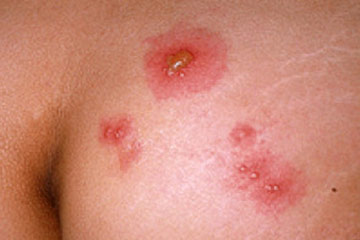How is ocular histoplasmosis syndrome (OHS) diagnosed?
An eye care professional will usually diagnose OHS if a careful eye examination reveals two conditions:
- The presence of histo spots, which indicate previous exposure to the histo fungus spores; and
- Swelling of the retina, which signals the growth of new, abnormal blood vessels.
To confirm the diagnosis, a dilated eye examination must be performed. This means that the pupils are enlarged temporarily with special drops, allowing the eye care professional to better examine the retina.
If fluid, blood, or abnormal blood vessels are present, an eye care professional may want to perform a diagnostic procedure called fluorescein angiography. In this procedure, a dye, injected into the patient's arm, travels to the blood vessels of the retina.
The dye allows a better view of the CNV lesion, and photographs can document the location and extent to which it has spread. Particular attention is paid to how close the abnormal blood vessels are to the fovea.






